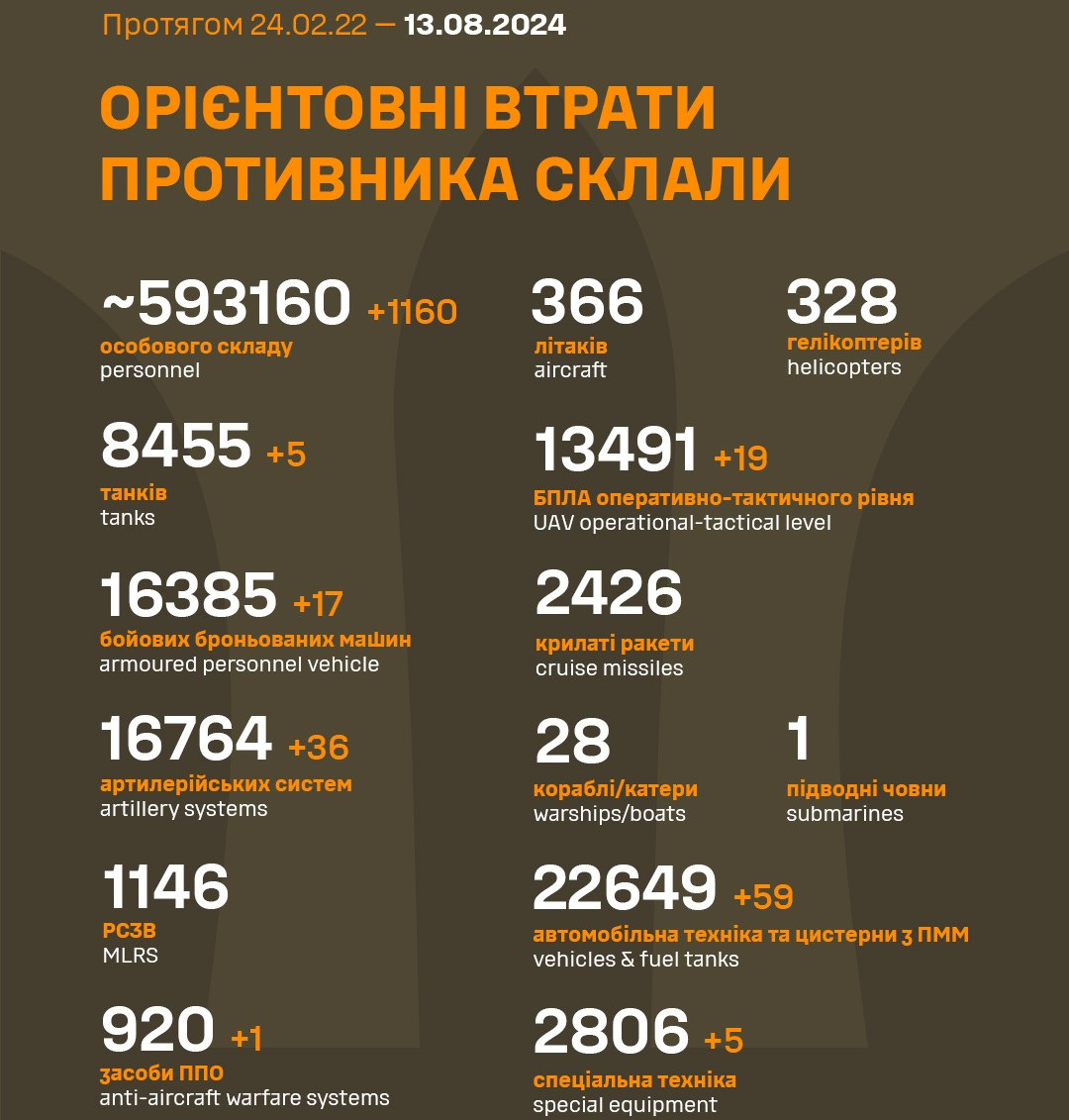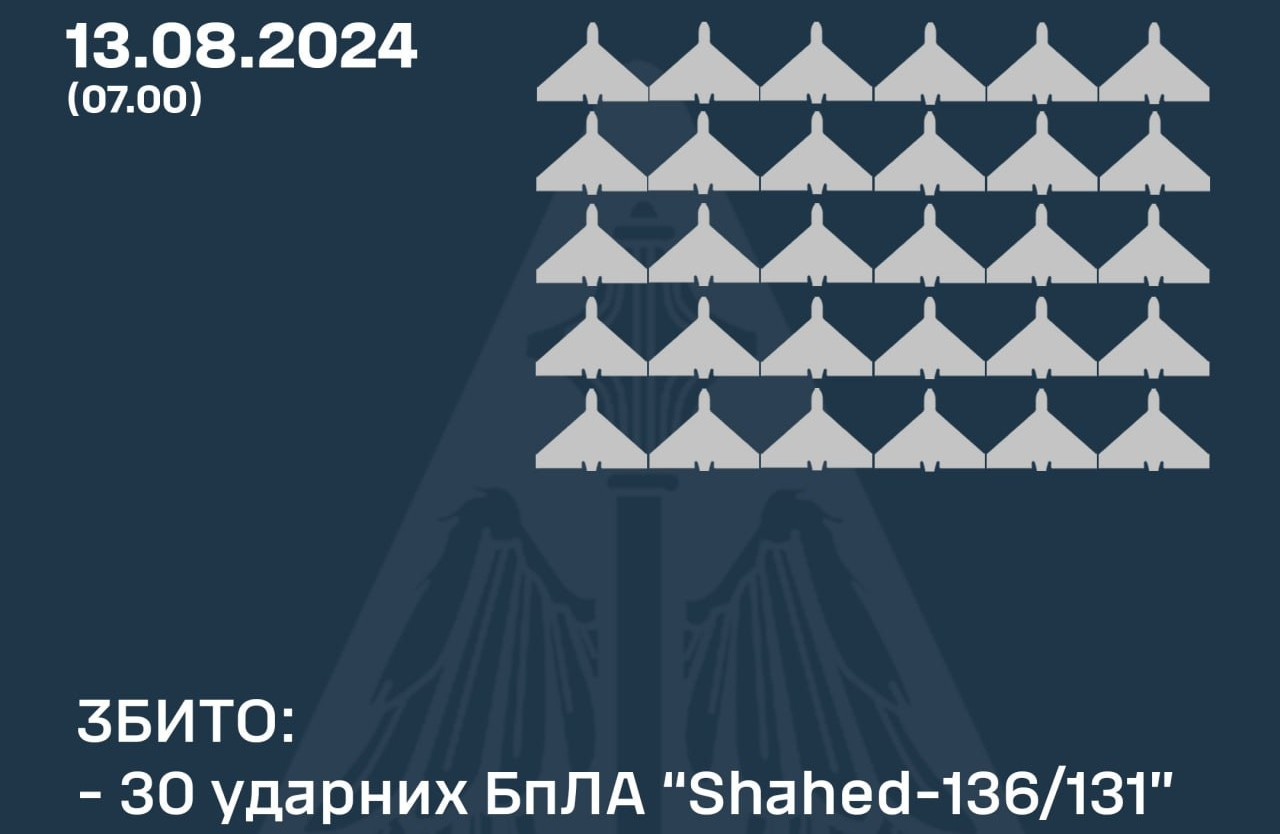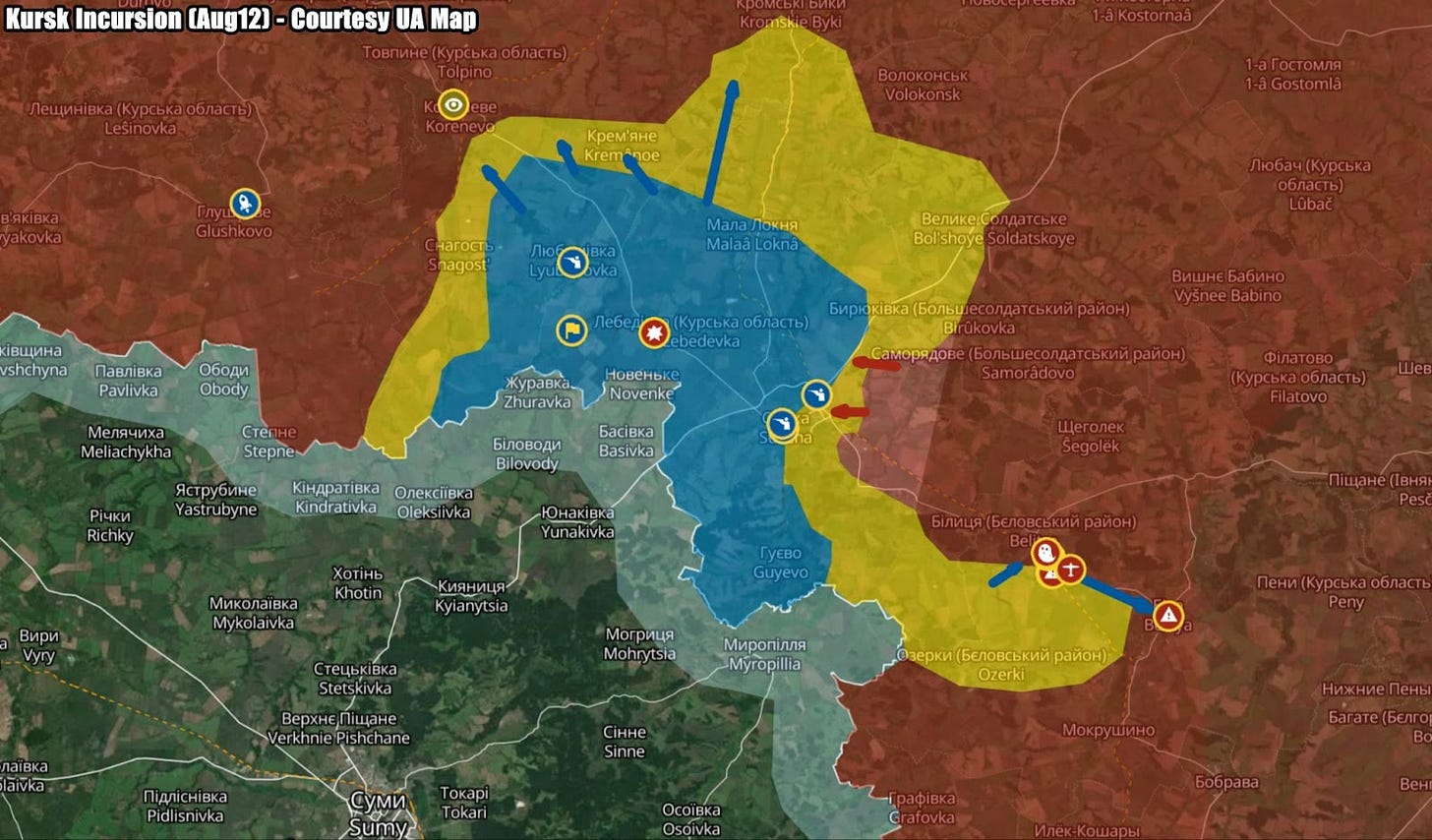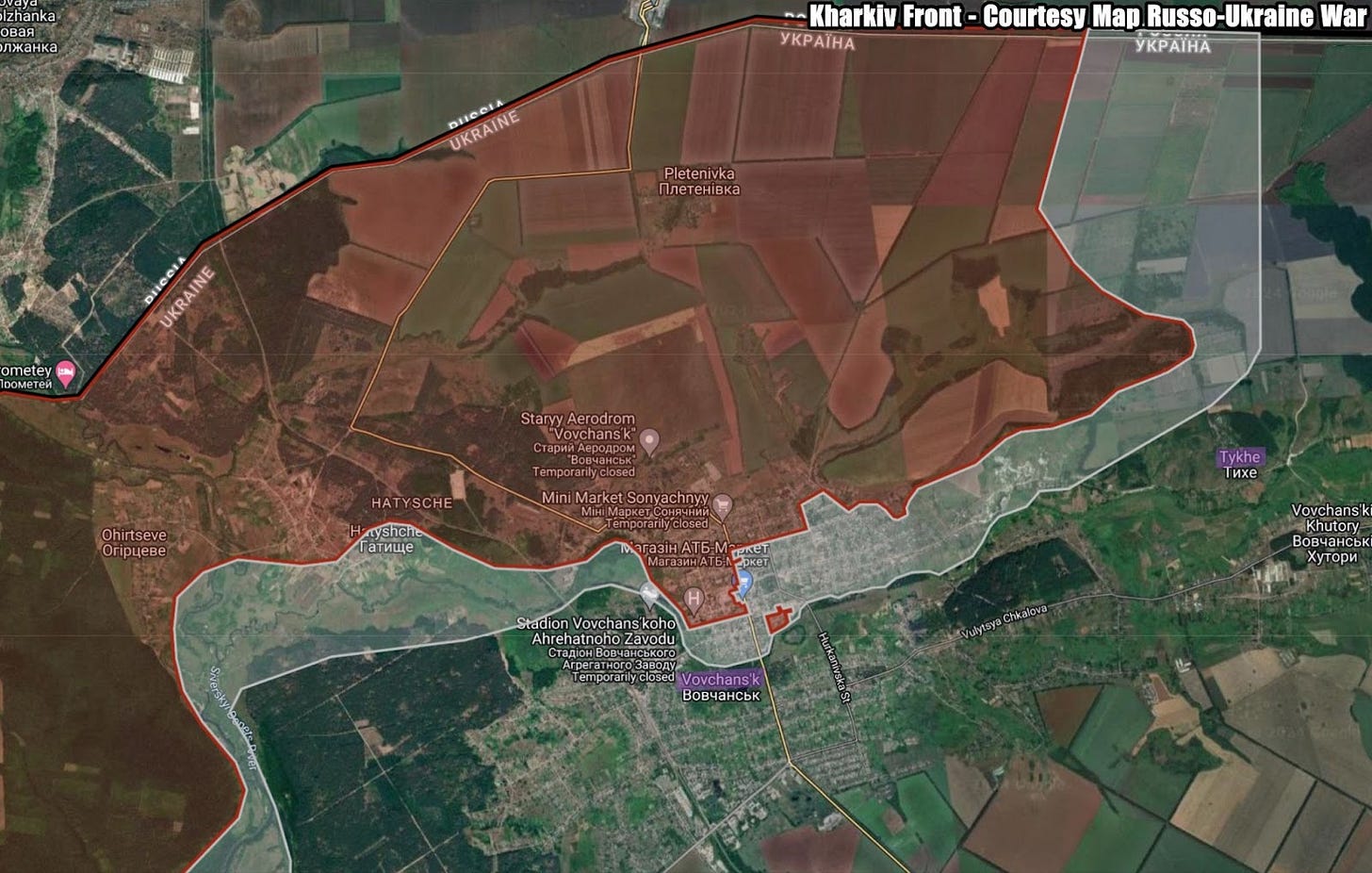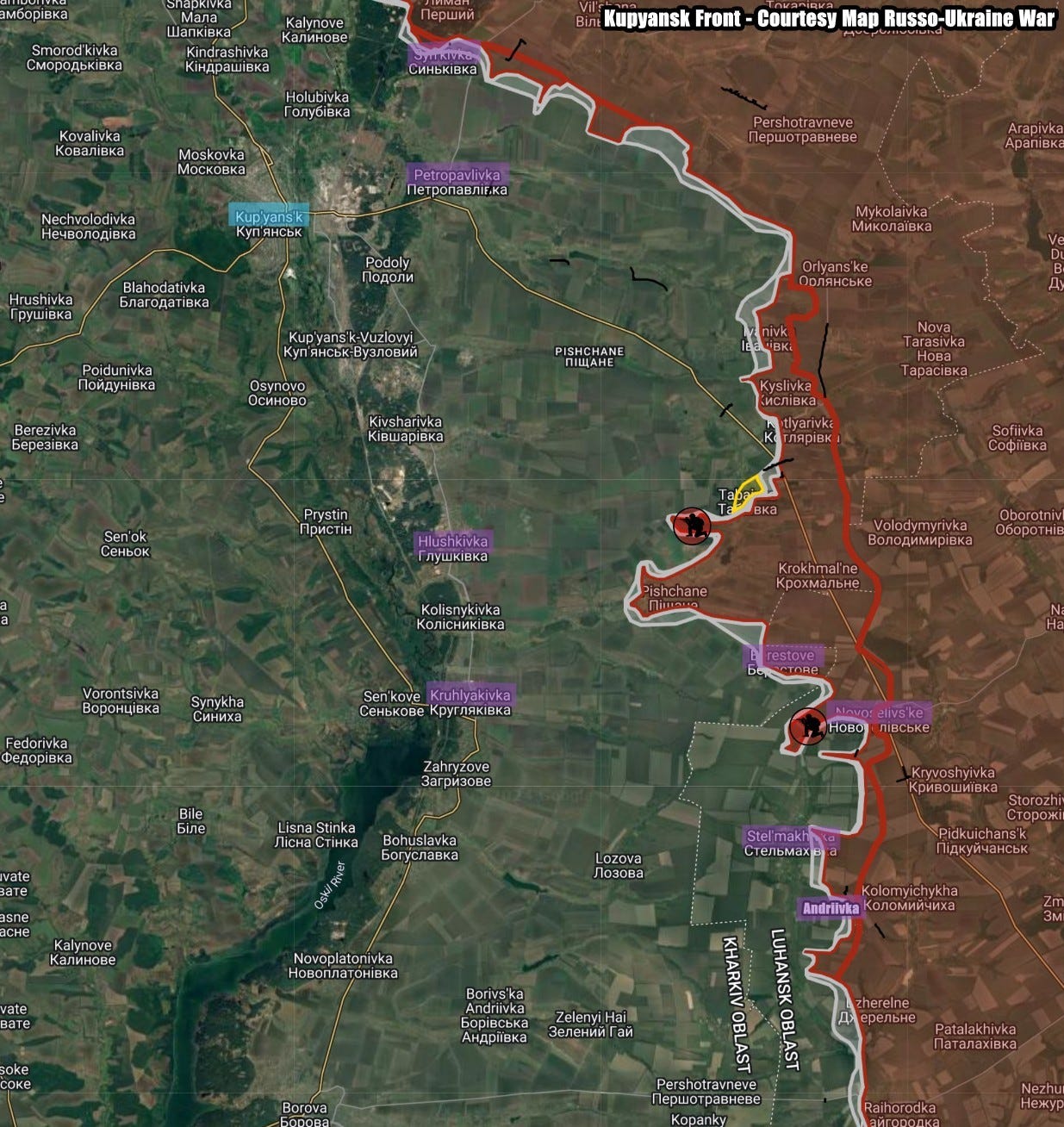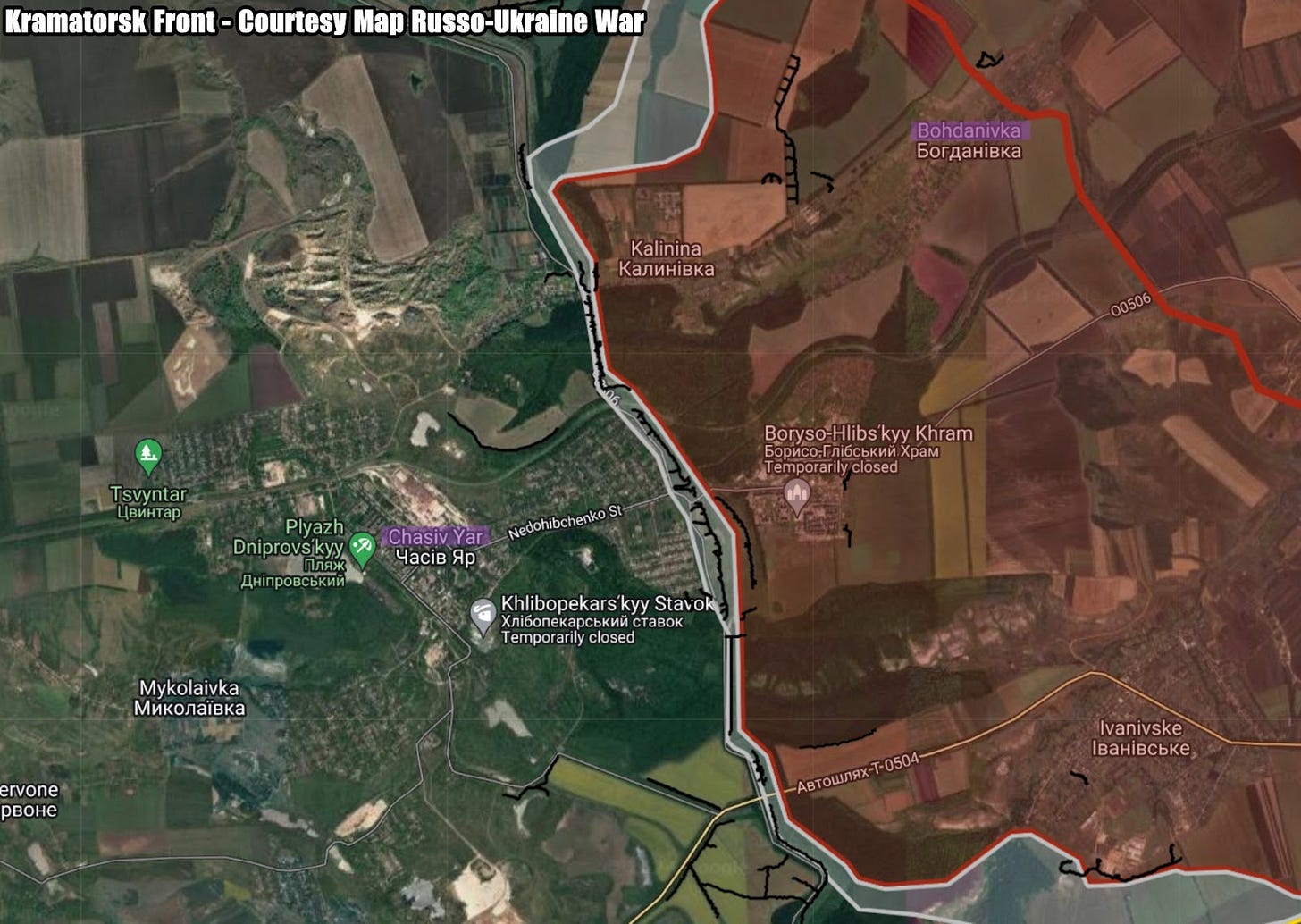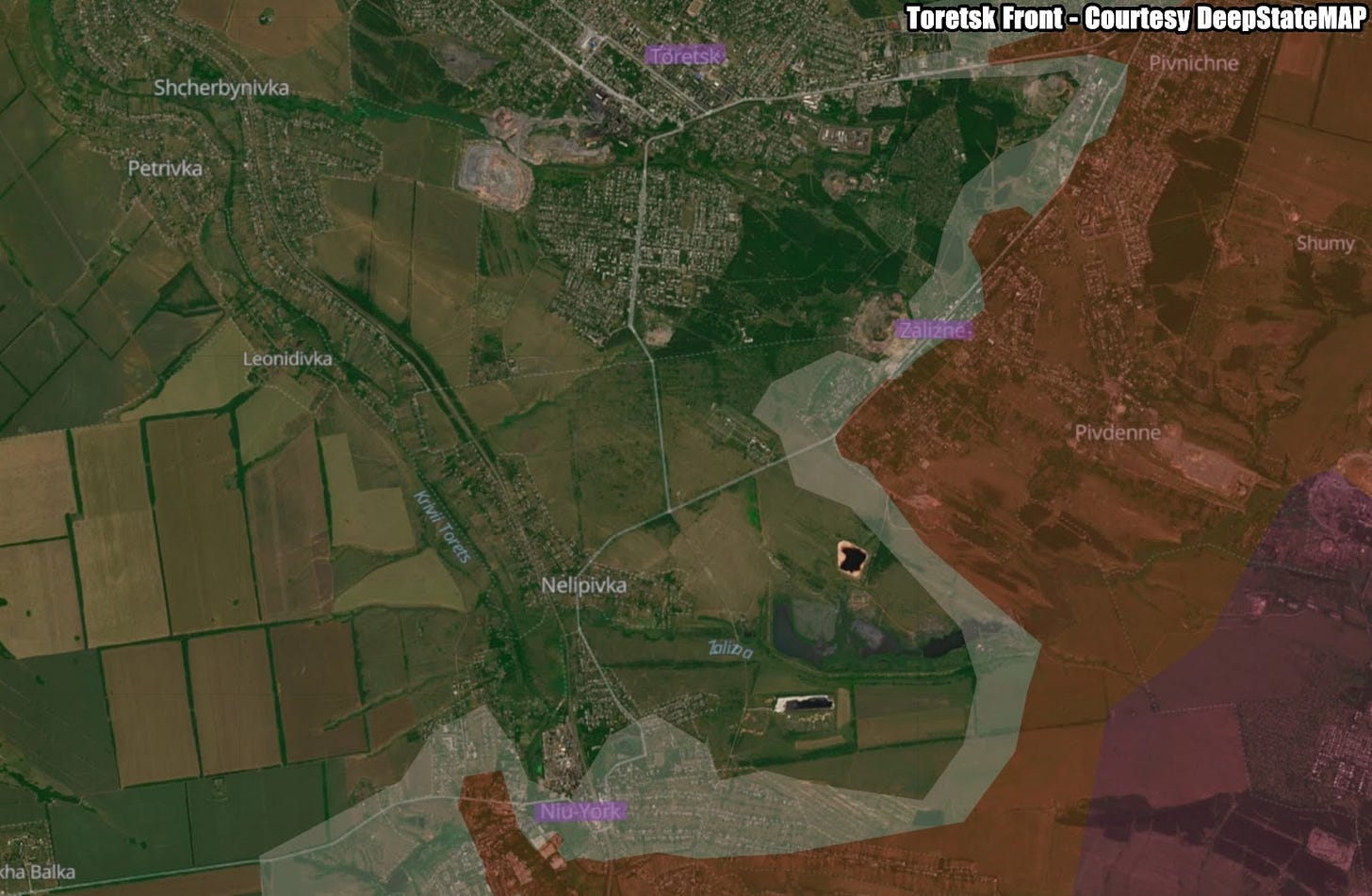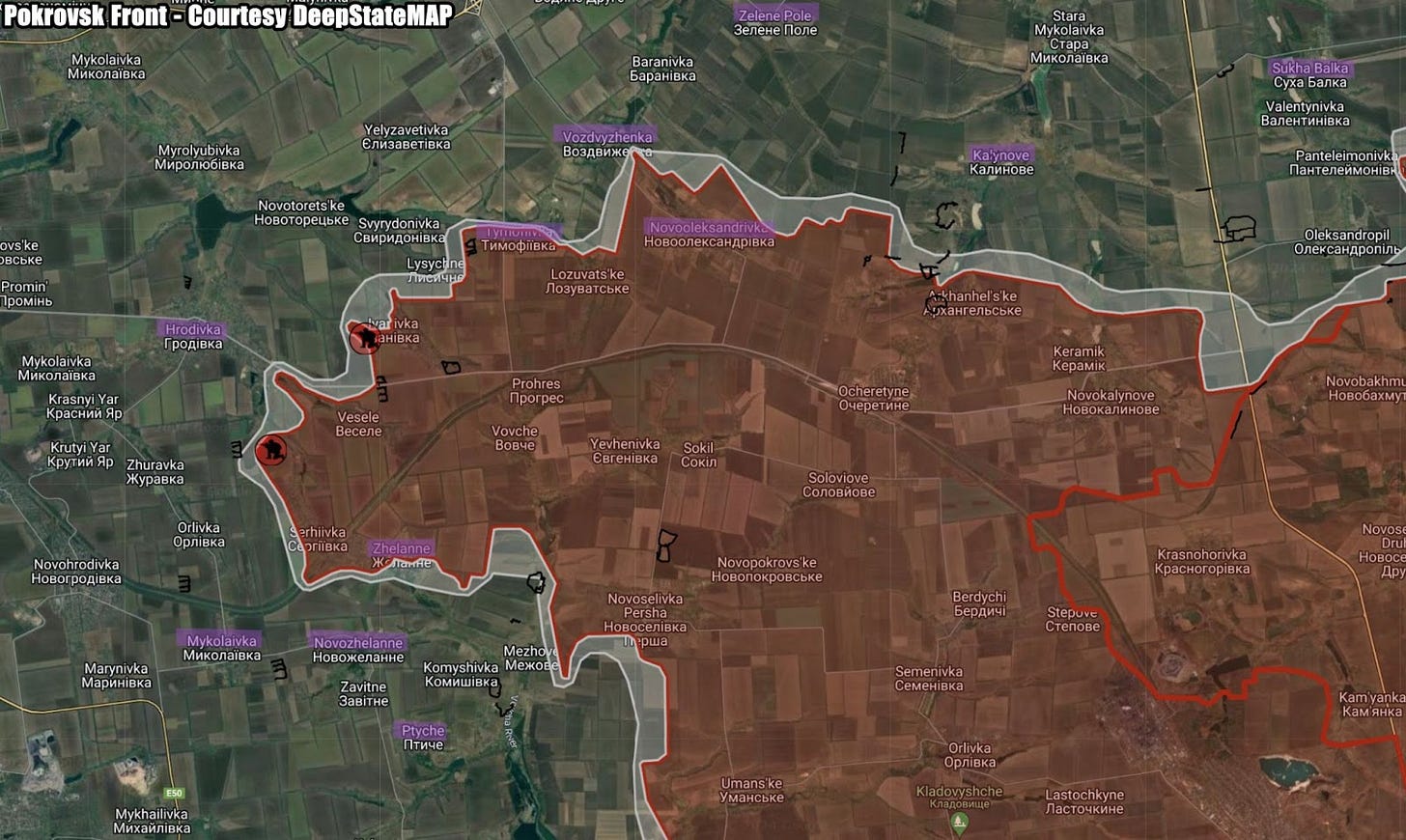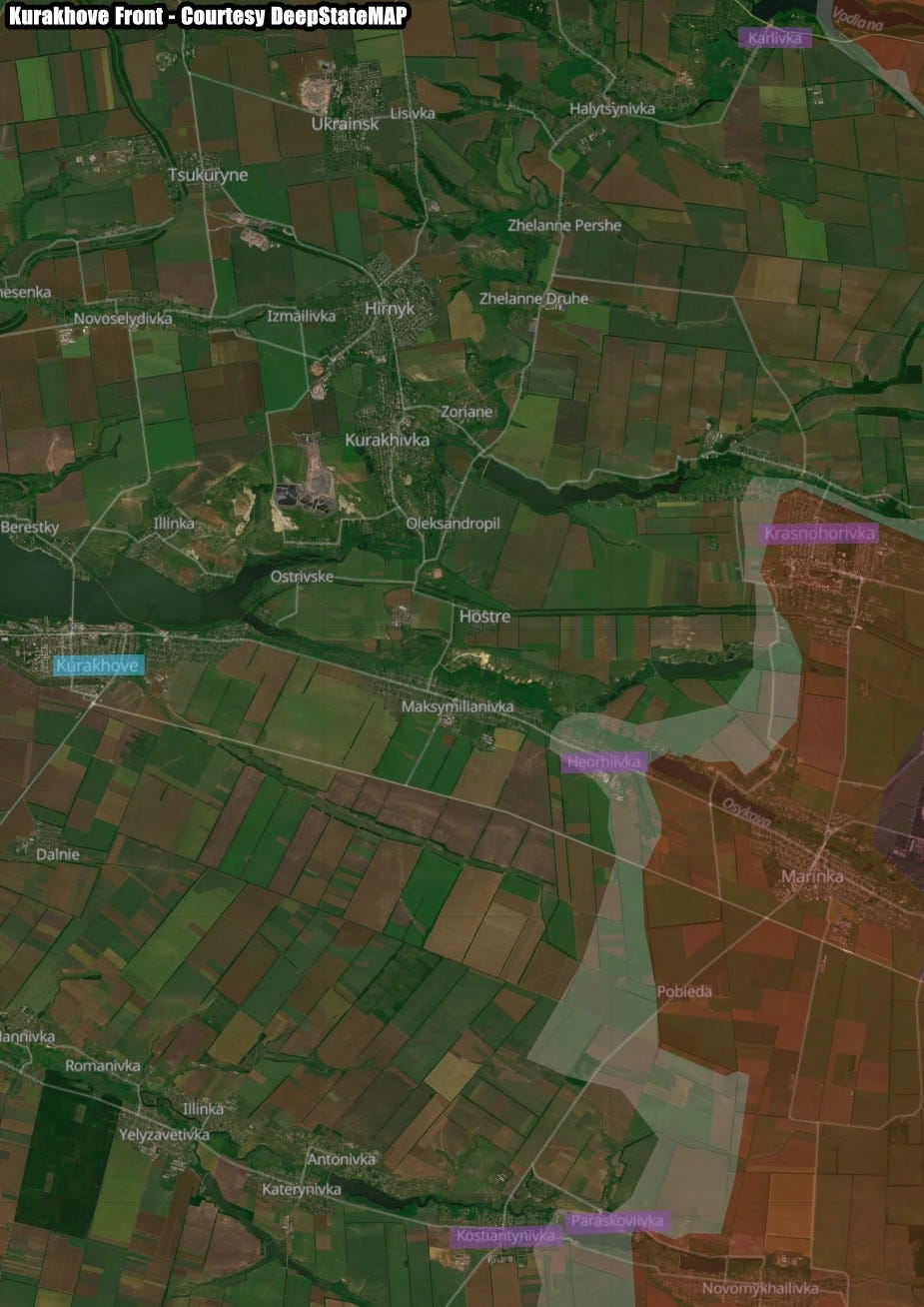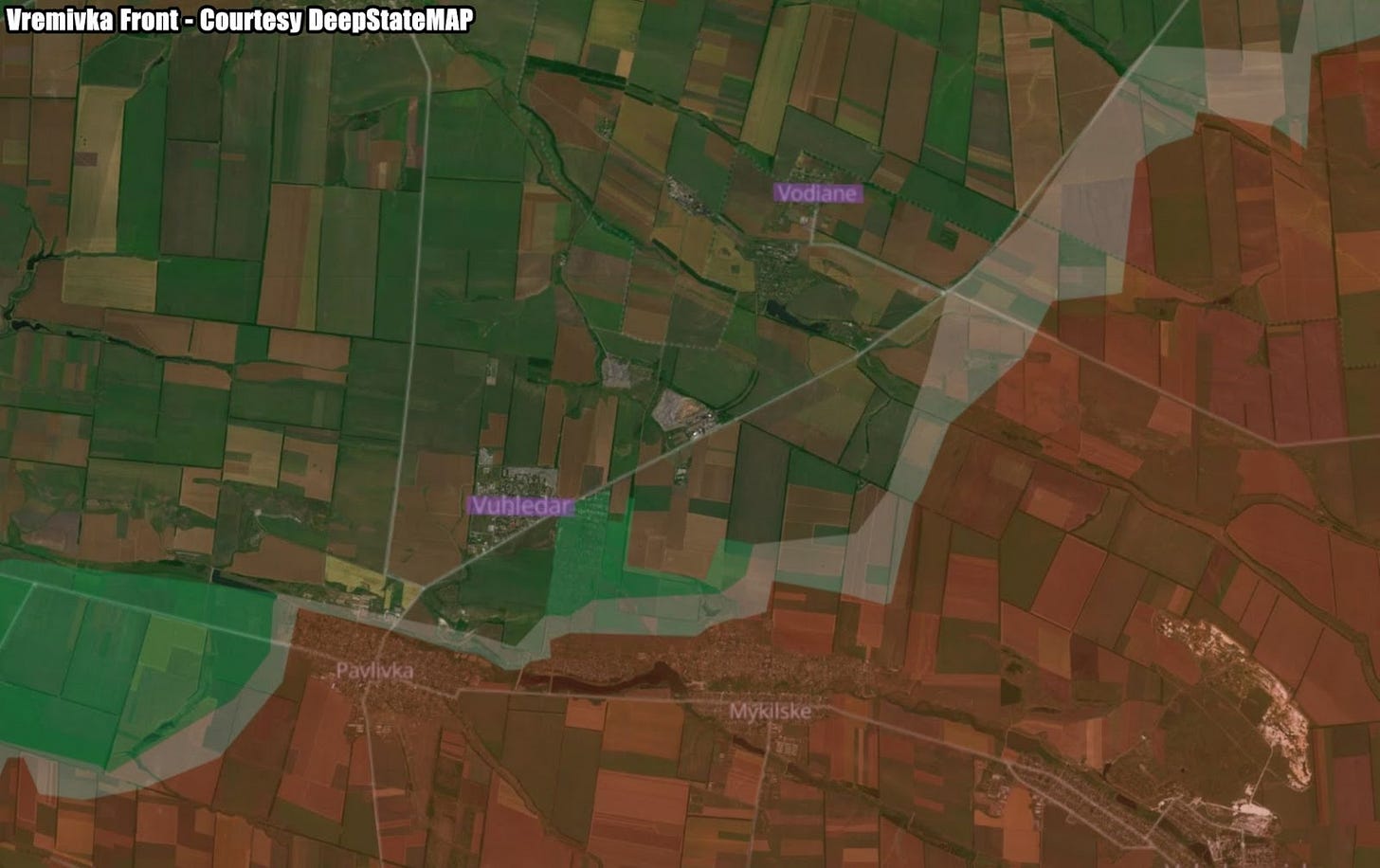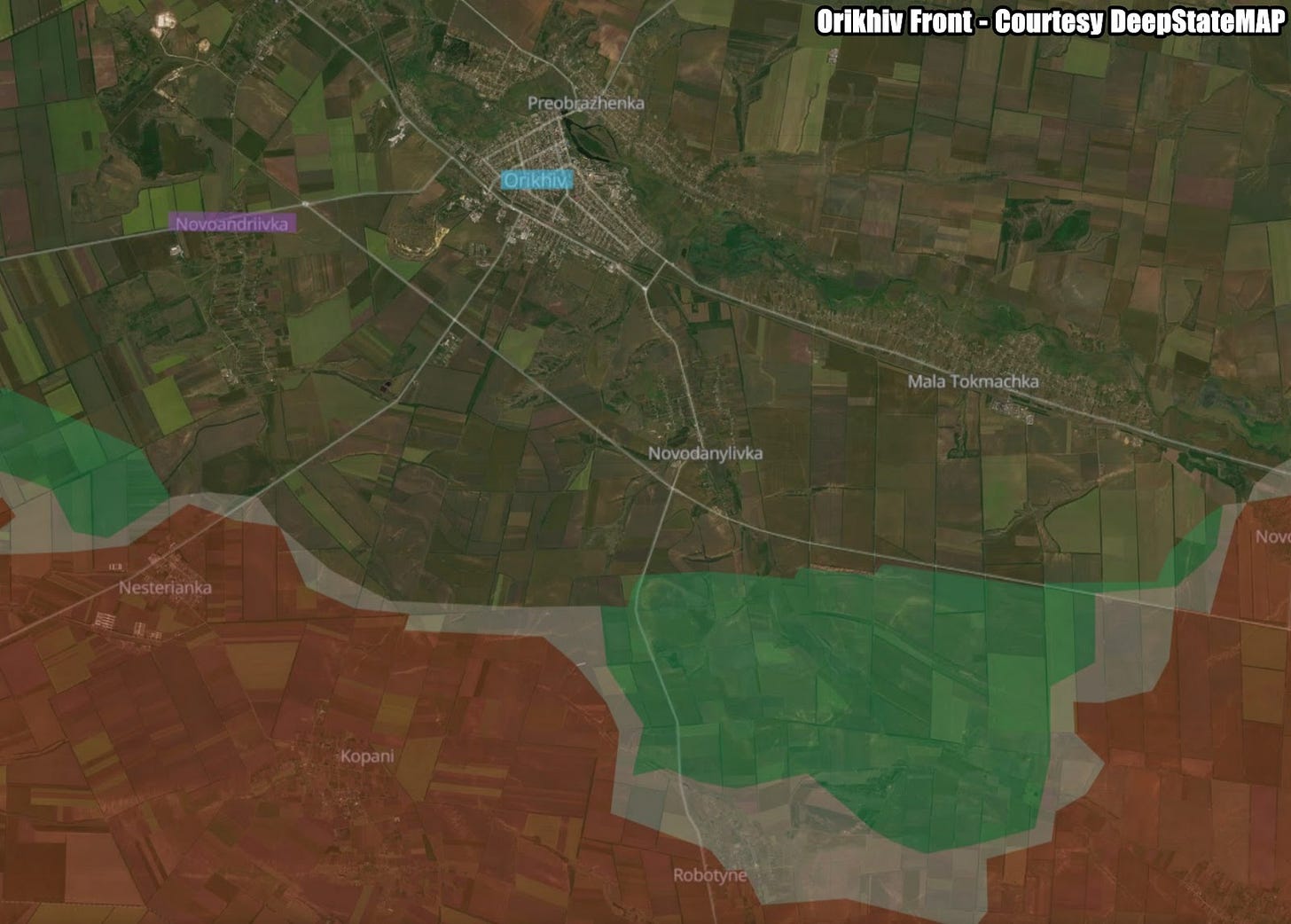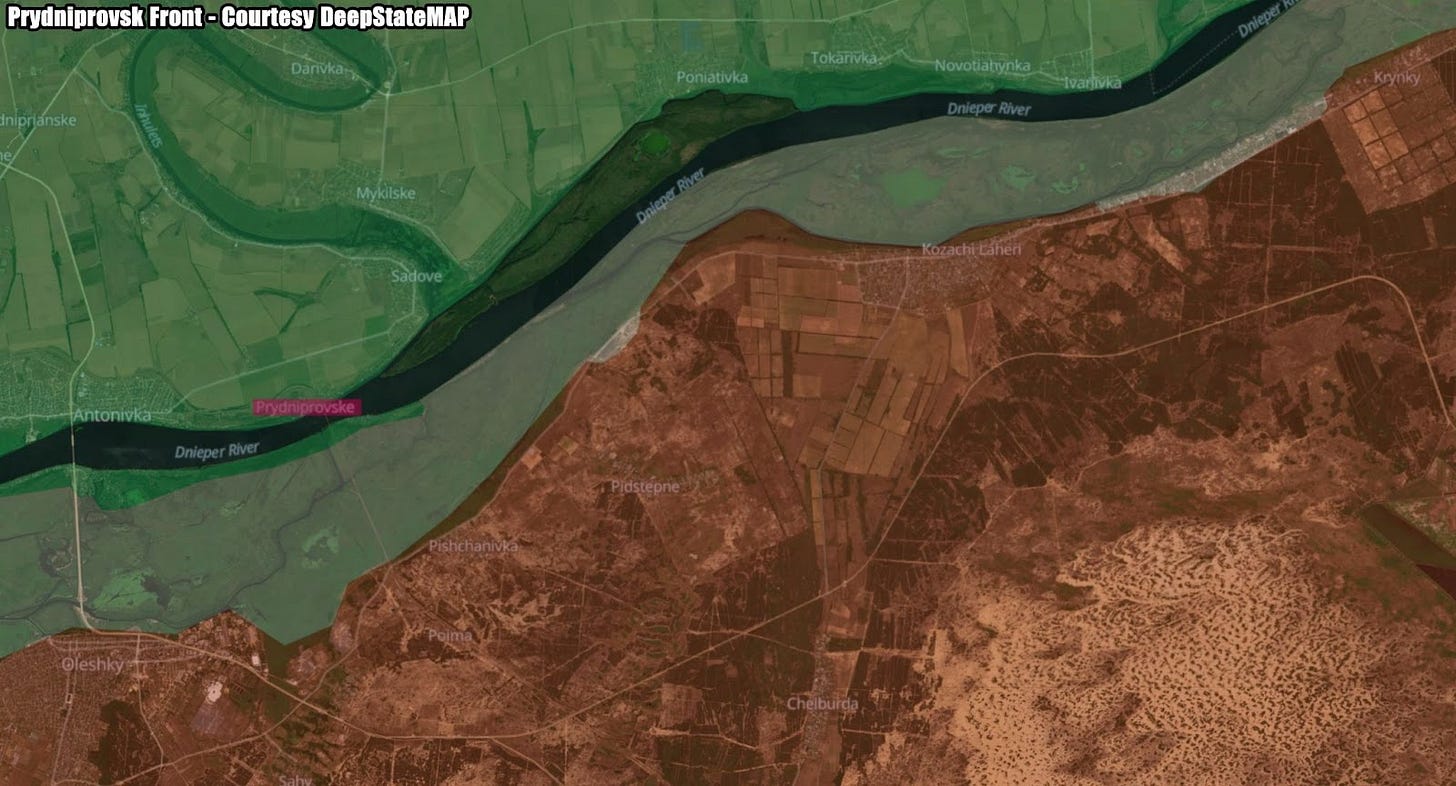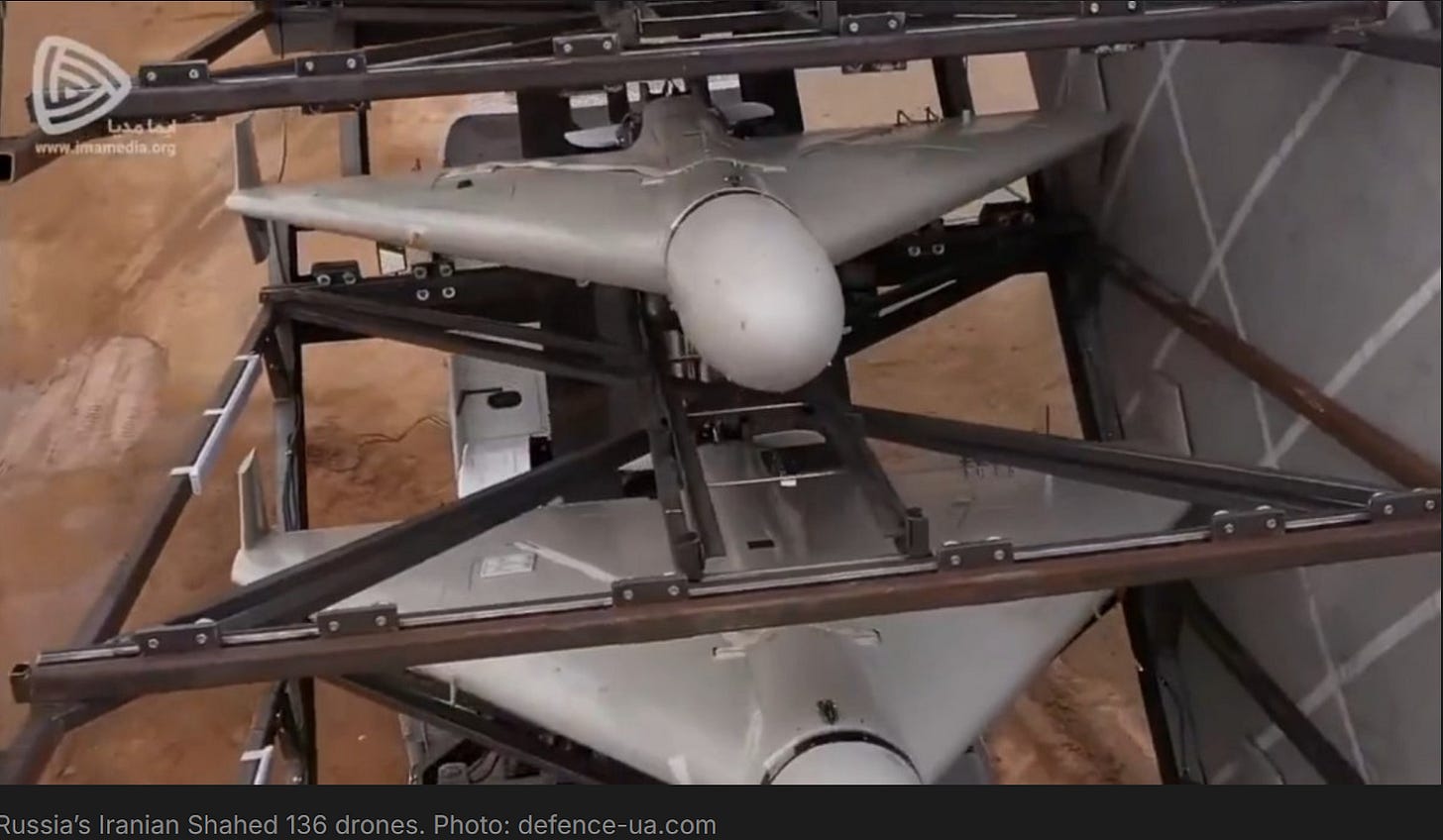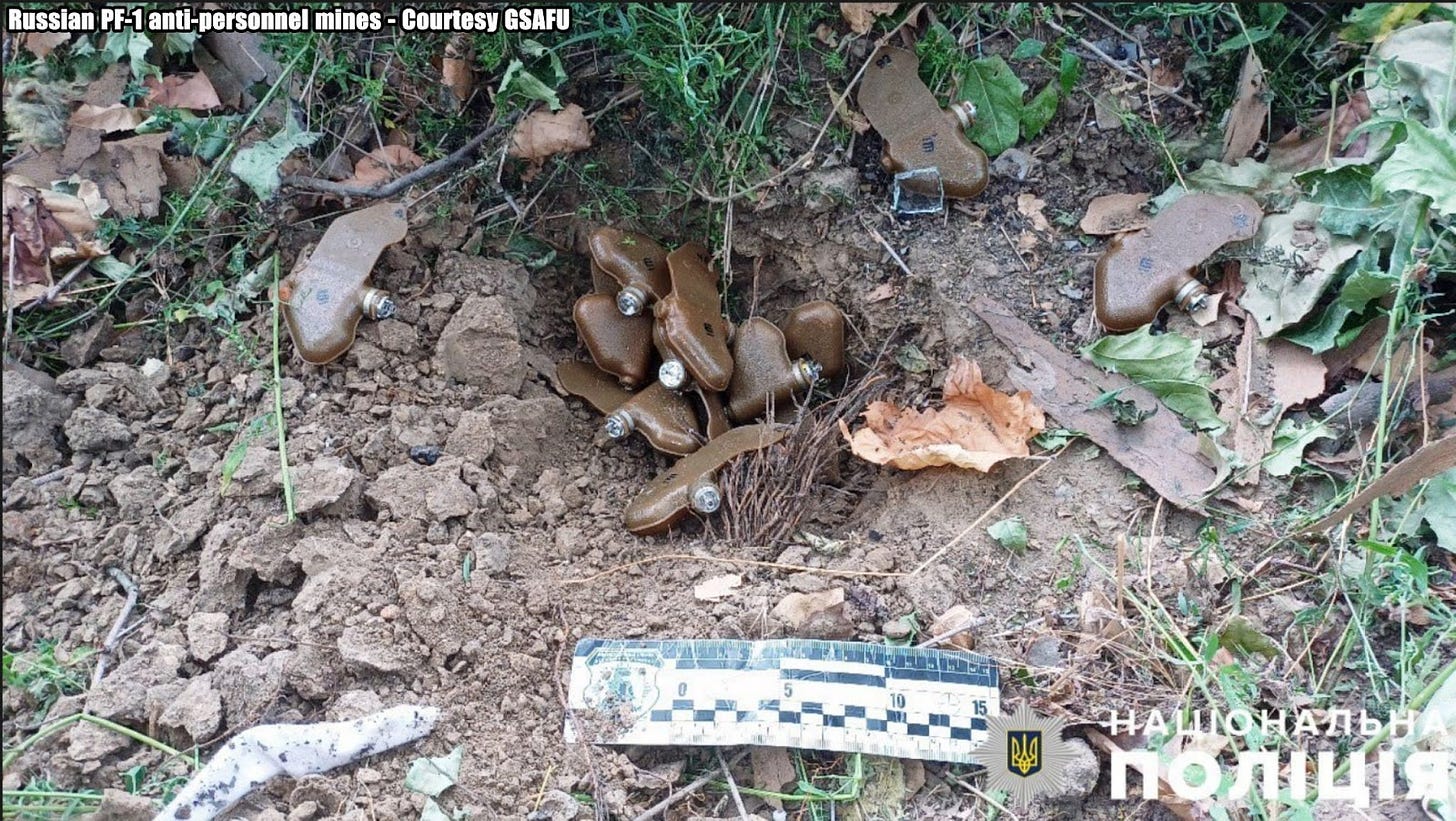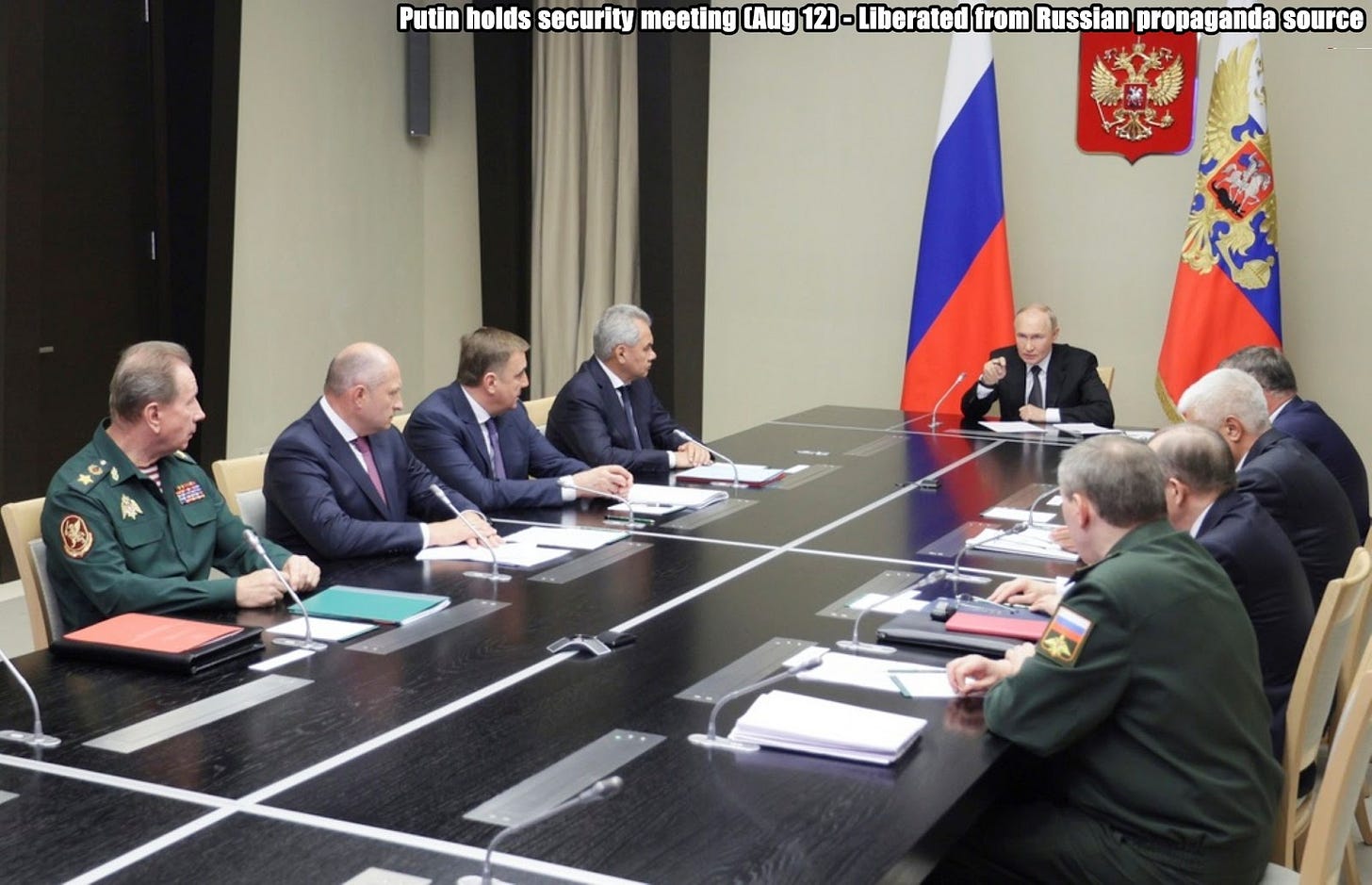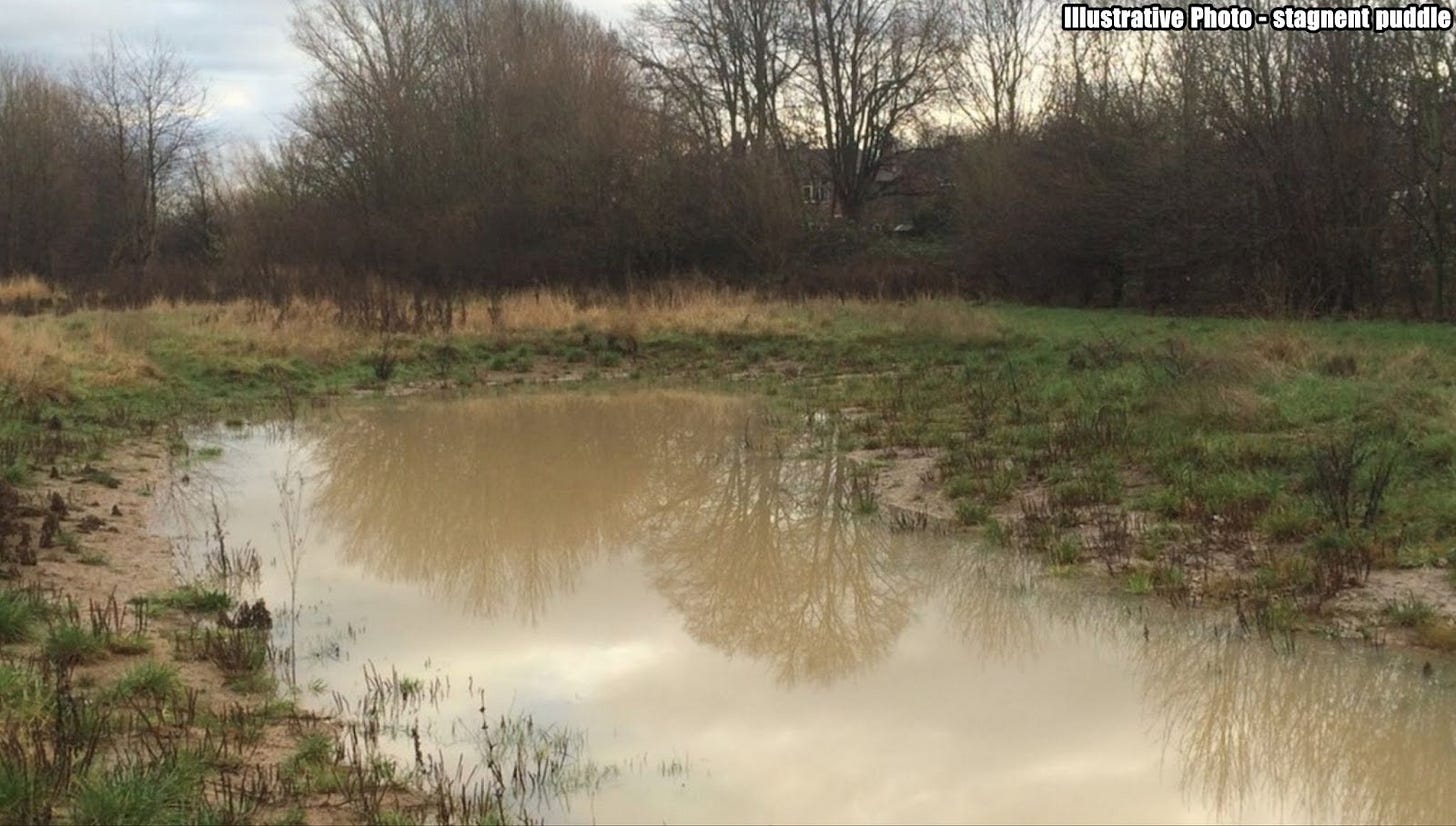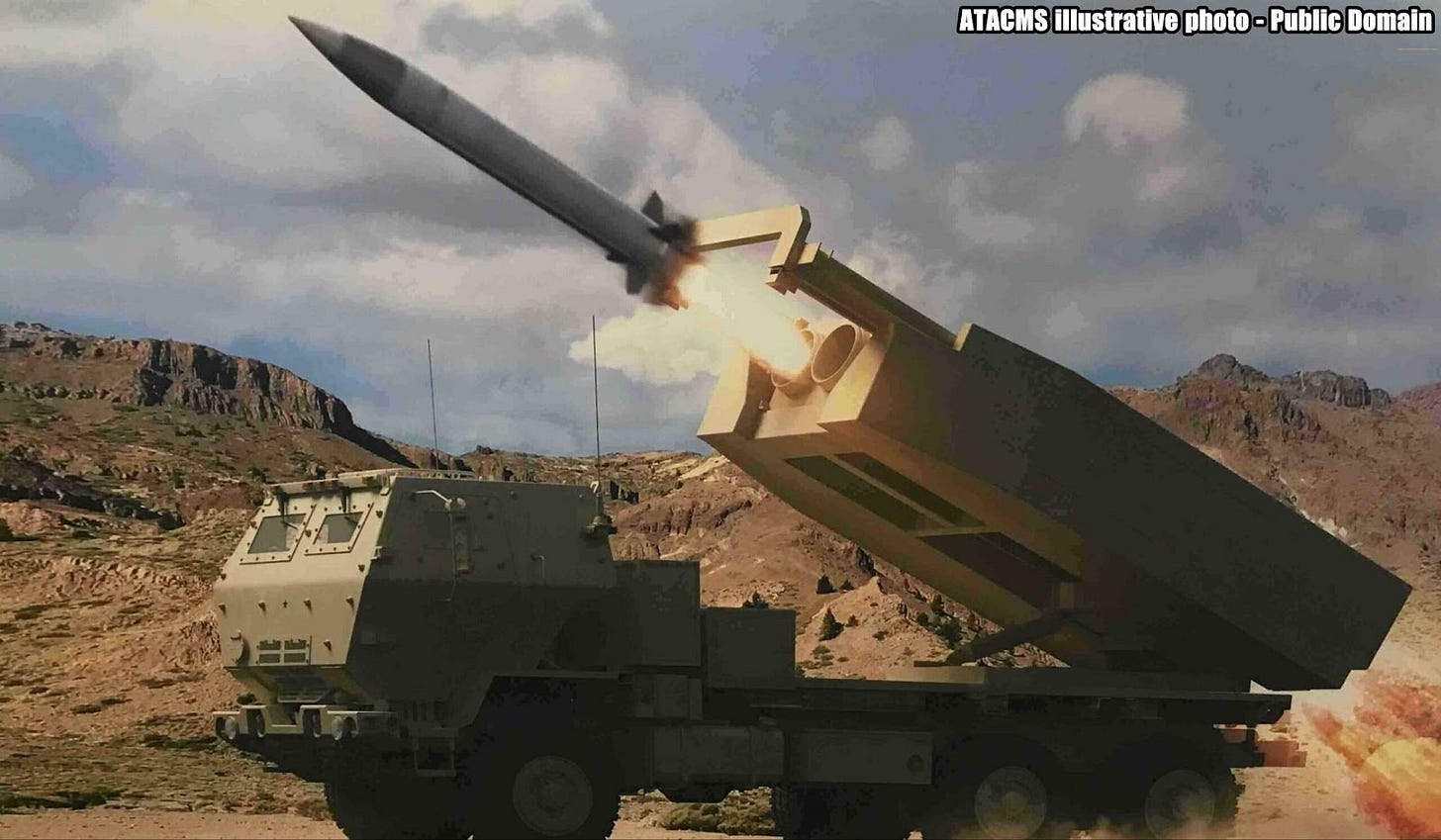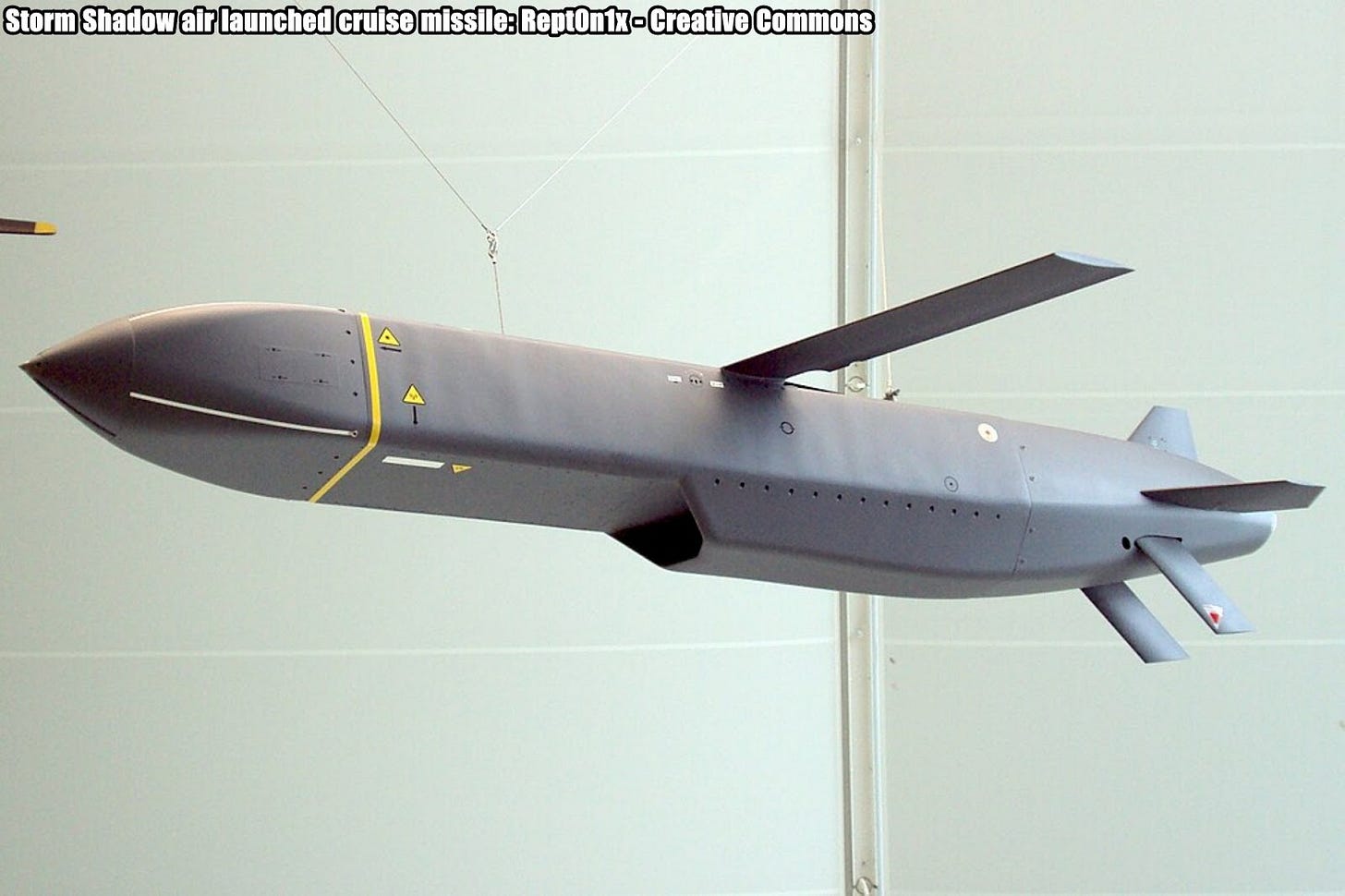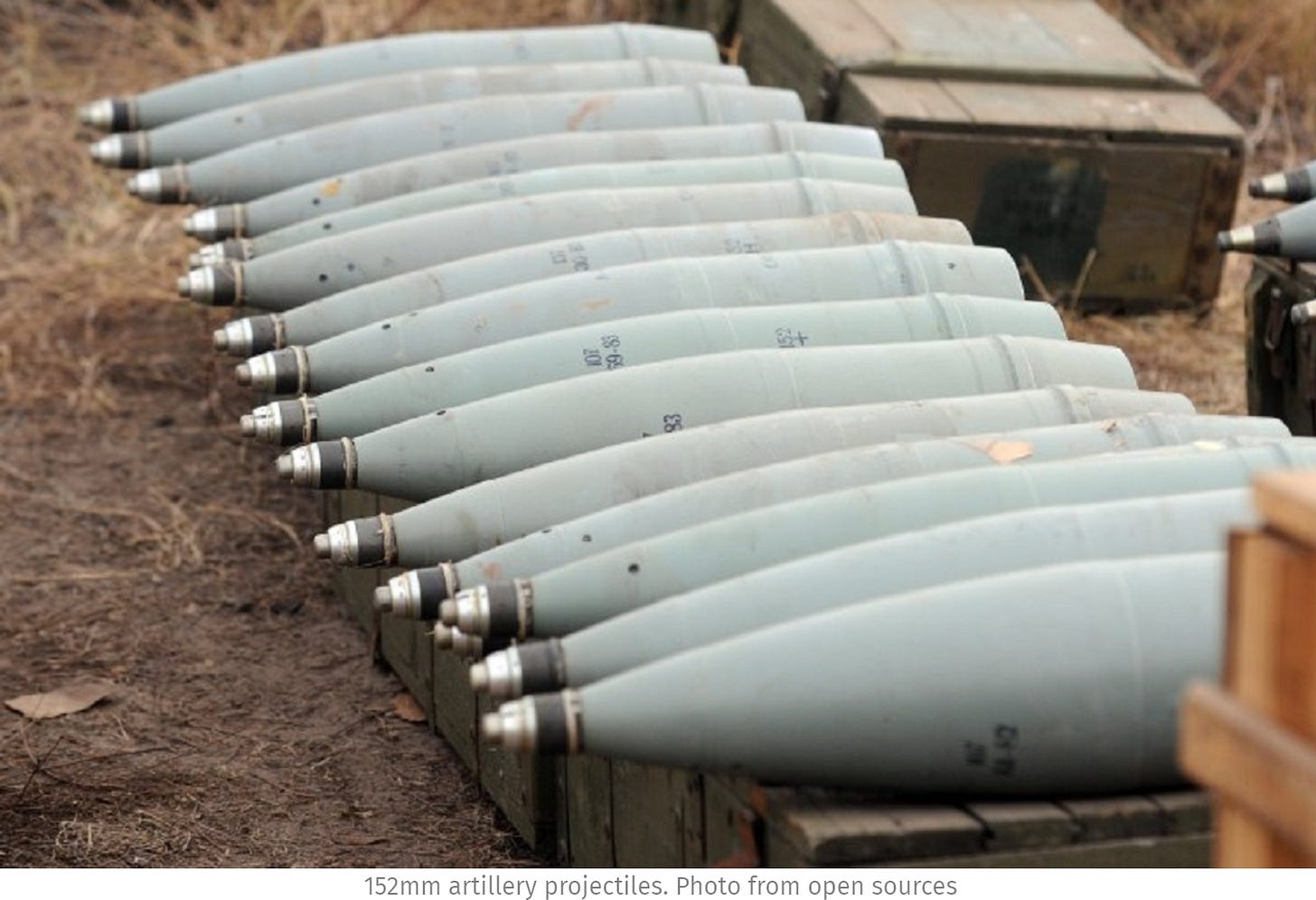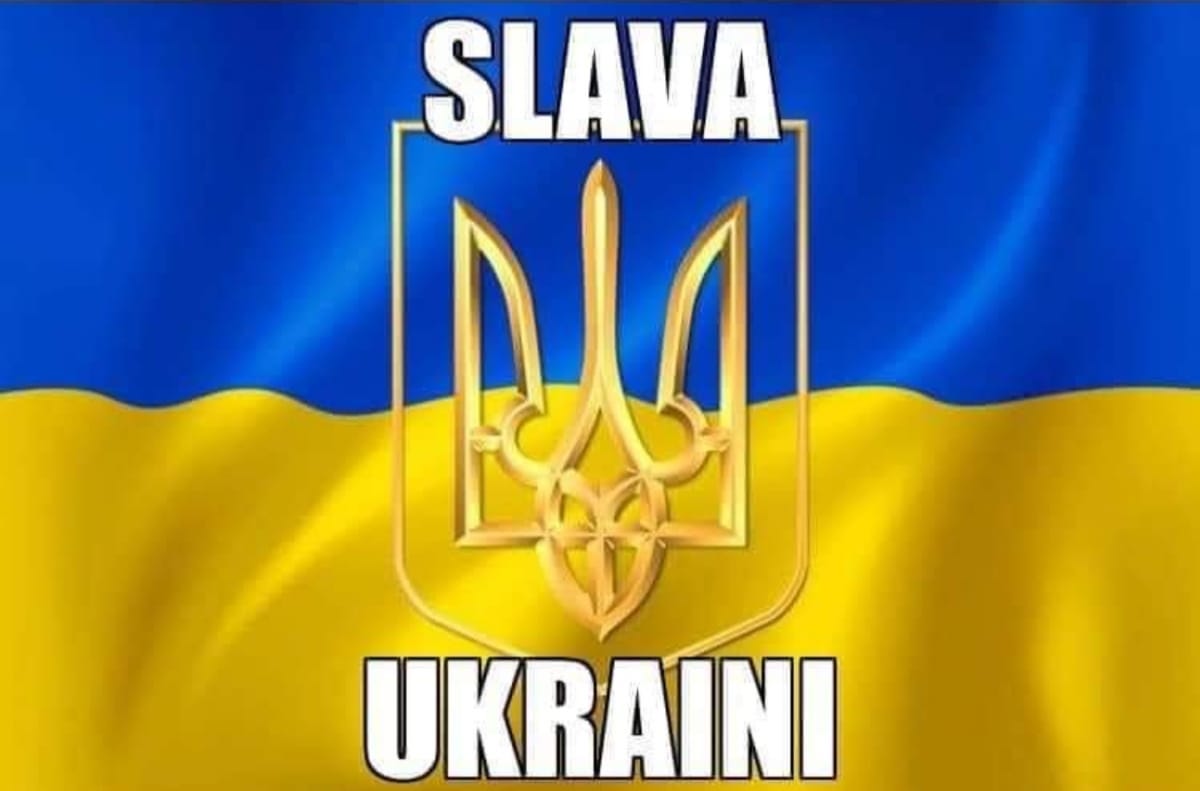Slava Ukraini! In early 2022 I began a Telegram channel aggregating news from a number of sources daily on the war in Ukraine. Since June 2023 I have provided a daily draft for the Ukraine War Brief Podcast collecting news from over 70 sources daily, much of which forms the basis of the script. While the Podcast is on hiatus I will make this Draft available here both on my own Substack and The People’s Media for those who wish to keep up with events on a daily basis.
ALONG THE CONTACT LINE
GSAFU Morning Report
The General Staff of the Armed Forces of Ukraine in its Operational Information update at 22:00 on Aug 12 stated that day 901 of the full-scale invasion of the Russian Federation against Ukraine was about to begin.
During the past day, 133 combat engagements took place. Over the past 24 hours, the enemy carried out 2 missile strikes, 82 air strikes, 418 drone strikes and more than 3,300 artillery strikes across the positions of Ukrainian forces.
At the same time, Ukrainian soldiers continue to inflict losses in manpower and equipment on the occupying troops, exhausting the enemy along the entire front line and continue to disrupt the plans of Russian occupiers to advance deep into the territory of Ukraine.
Russia moves some units from Ukraine's south to Kursk, Kyiv says
Russia has moved parts of its units from several directions in Ukraine, including the south sector to reinforce its defences in Kursk Oblast, Dmytro Lykhovii, a spokesperson for Ukraine's Tavria Group, said on Aug. 12. The Kyiv Independent reported.
The Ukrainian military launched a surprise incursion across the border into Kursk Oblast on Aug. 6, bringing regular Ukrainian forces into Russia for the first time.
Lykhovii said that Russia is redeploying its units not only to the Kursk sector, where it has "holes in its defence," but also to other directions.
The Ukrainian military needs time to understand Moscow's intentions, he added.
"When there were numerous Russian personnel, there were fewer assault actions, and when they started to withdraw to the Kursk direction, there was a sharp increase in activity in the sector on the left bank of the Dnipro River," the spokesperson said on
"It will take a few days to understand whether these were Russian demonstrative actions, when they allegedly want to show that despite the decrease of their defensive orders, they are able to attack, or whether it is some other plan."
According to Lykhovii, the number of assault attempts by Russian troops in the Tavria sector is "ten times less" than in the Pokrovsk sector, but this does not mean "a lull."
According to Zelensky, Ukraine's incursion is "solely a security issue," and the country aims to liberate the border from Russian soldiers to protect Sumy Oblast from Moscow's daily attacks.
Air Force Daily Report
On the night of August 13, 2024, the enemy attacked with 2 "Iskander-M" /KN -23 ballistic missiles from the Voronezh region and 38 "Shahed" type UAVs from the Primorsko-Akhtarsk, Kursk - Russian Federation areas.
As a result of the anti-aircraft battle, 30 enemy UAVs were shot down in the Mykolaiv, Vinnytsia, Sumy, Kirovohrad, Kherson, Chernihiv, Dnipropetrovsk and Cherkasy regions by the mobile fire groups of the Defense Forces of Ukraine, aviation, anti-aircraft missile units and EW means of the Air Force.
The Russian Border Incursion
Ukraine touts huge gains in Kursk region as it takes war back to Russia
Ukraine said on Monday its biggest cross-border assault of the war had captured 1,000 square kilometres (386 square miles) of Russia's Kursk region and that Russian President Vladimir Putin would have to be forced into making peace. Reuters reported on Aug 12.
With Russia still struggling to repel the surprise assault a week after it began, Ukraine's top commander Oleksandr Syrskyi briefed President Volodymyr Zelenskyy by video link and said the advance into Russian territory was ongoing.
"We continue to conduct an offensive operation in the Kursk region. Currently, we control about 1,000 square kilometres of the territory of the Russian Federation," he said in a video published on Zelenskyy's Telegram account.
He provided scant other detail, continuing Kyiv's strategy of silence that contrasts starkly with last year's counteroffensive that was known about for months in advance and which foundered on Russian defensive lines.
Syrskyi spoke a few hours after Alexei Smirnov, Russia's acting regional governor of Kursk, estimated that Kyiv's forces had taken control of 28 settlements in an incursion that was about 12 km deep and 40 km wide.
Though less than half Syrkyi's estimate of the Ukrainian gains, Smirnov's remarks were a striking public admission of a major Russian setback more than 29 months since it launched a full-scale invasion of its smaller neighbour.
Reuters was unable to verify the claims by either side.
Putin has described the cross-border attack as a "major provocation" and said it was aimed at improving Kyiv's negotiating position.
Zelenskyy told Ukrainians in his nightly address that the operation was a matter of Ukrainian security and the Kursk region had been used by Russia to launch many strikes against Ukraine.
The Ukrainian attack comes after months of slow but steady advances by Russian forces in the east that has forced Ukraine's troops onto the back foot as they try to withstand Russia's heavy use of gliding bombs and assault troops.
Former Ukrainian defence minister Andriy Zagorodnyuk told Reuters the Kursk operation looked like it aimed to distract Russian forces and its leadership from the eastern fronts.
"The apparent goal is to create a problem area for Russia, which will distract its forces and its leadership's attention and resources from where they're trying to succeed right now," he said by phone.
Visiting Kyiv on Monday, U.S. Republican Senator Lindsey Graham urged the U.S. presidential administration to provide Ukraine with the weapons it needs.
"What do I think about Kursk? Bold, brilliant, beautiful. Keep it up," he told reporters.
Putin has said Ukraine had received help from its "Western masters" and vowed that "the enemy will certainly receive a worthy response".
Ukrainian forces appear to be advancing further within Kursk Oblast despite Russian claims
The Institute for the Study of War (ISW), a US based think tank, in its Aug 12 Russian Offensive Campaign Assessment assessed that Ukrainian forces appear to be advancing further within Kursk Oblast despite recent milblogger claims that Russian forces were stabilising the frontline in Kursk Oblast.
Russian milbloggers claimed on August 11 that Ukrainian offensive activity decreased in Kursk Oblast; however, a prominent Kremlin-affiliated milblogger refuted these claims on August 12 and noted that Russian forces are far from stabilising the situation.
Ukrainian forces reportedly launched new incursions into western Kursk Oblast near Slobodka-Ivanovka (northwest of Sumy City and two kilometres from the international border), Tetkino (south of Slobodka-Ivanovka along the international border), Gordeevka, Uspenka, and Viktorovka (all north of Sumy City along the international border and south of Korenevo).
Russian sources claimed that Ukrainian forces seized Slobodka-Ivanovka, Uspenivka, and Viktorovka. Russian milbloggers claimed that fighting continued near Snagost (south of Korenevo) and Kremyanoye (east of Snagost) and that Ukrainian forces are attacking north and south of Korenevo in an attempt to bypass the settlement.
Geolocated footage indicates that Ukrainian forces recently advanced within Kremyanoye and east of Zhuravli (northeast of Korenevo), and a Kremlin-affiliated milblogger claimed that Ukrainian forces advanced north of Zhuravli towards Obshchy Kolodez (northeast of Korenevo and 30 kilometres from the international border)
Additional geolocated footage indicates that Ukrainian forces recently advanced in a forest area north and east of Semenovka (south of Lgov and roughly 24 kilometres from the international border) during a likely battalion-sized mechanised assault in the direction of Kauchuk (south of Lgov and 27 kilometres from the international border), although the exact contours of Ukraine's advance are unclear.
Geolocated footage published on August 12 indicates that Ukrainian forces were recently operating in Sudzha and northern Zaoleshenka (west of Sudzha), and Russian milbloggers claimed that Ukrainian forces have seized Sudzha and Spalnoye (southeast of Sudzha).
Additional geolocated footage published on August 12 shows Ukrainian vehicles operating in northern Giri (southeast of Sudzha and 13 kilometres from the international border) and Russian forces ambushing Ukrainian forces in central Giri, indicating that Ukrainian forces at least temporarily advanced into the settlement, although it is unclear if Ukrainian forces maintain positions in the area.
The Russian Ministry of Defense (MoD) claimed that Russian forces repelled a Ukrainian attack near Borki (southeast of Sudzha), suggesting that Ukrainian forces likely advanced into Giri from the west. Geolocated footage published on August 12 indicates that Ukrainian forces were recently operating in Darino (northwest of Sudzha and three kilometres from the international border).
Russian sources claimed that Ukrainian forces also conducted cross-border incursions with armoured vehicle support from Sumy Oblast northwest of Grayvoron, Belgorod Oblast near Kolotilovka and Prelesye and south of Grayvoron near Bezymeno.
The Khortytsia operational-strategic group
(Responsible for the northeastern part of Ukraine. )
Kharkiv axis: There were 3 Russian attacks over the last day near Vovchansk and Tykhe 1 was repelled, 2 are ongoing.
Kupyansk axis: The enemy carried out 12 attacks against Ukrainian positions near Sinkivka, Petropavlivka, Hlushkivka, Berestone, Kruhlyaivka, Novoseilivske, Stelmahivka and Andriivka. 1 engagement is still ongoing.
Lyman axis: Russia attacked 25 times unsuccessfully in the direction of settlements of Makiivka, Nevske, Terny and Torske. 1 attack continues.
Siversk axis: Russian forces carried out 4 assaults in the vicinity of Verkhnokamianske and Spirne. 1 assault is ongoing.
Kramatorsk axis: Russian forces carried out 7 offensive actions near Bohdanivka and Chasiv Yar. 2 attacks continue. The situation is under control.
Toretsk axis: There have been 10 Russian attacks over that last day with air support. All the efforts of the enemy were directed to the areas of Toretsk, Zalizne and Nui-York. 2 attacks are still ongoing.
The Tavria operational-strategic group
(Responsible for the central-eastern and southeastern part of Ukraine.)
Pokrovsk axis: The greatest activity of the enemy today occurred in the Pokrovsk sector. The enemy conducted 50 attacks against Ukrainian defences in this area over the last day concentrating in the vicinity of Sukha Balka, Kalynove, Vozdvizhenka, Novooleksandrivka, Timofiivka, Hrodivka, Zhelanne, Mykolaivka, Novozhelanne and Ptyche 7 battles continue.
Kurakhove axis: Russian forces unsuccessfully tried to advance 8 times in the area of settlements Karlivka, Krasnohorivka, Heorhiivka, Paraskoviivka and Kostiantinivka. 2 engagements are ongoing.
Vremivka axis: In this sector the situation is under control, Russian forces made 6 Russian assaults against Ukrainian positions near Vodiane and Vuhledar, 3 battles are ongoing.
Orikhiv axis: The situation in this sector has not changed significantly. 2 enemy attack was repulsed over the last day in the vicinity of Novoandriivka.
The Odesa operational-strategic group
(Responsible for Kherson, Qırım, (also known as Crimea) and the Black Sea.)
Prydniprovsk axis: In this sector, over the last day, the situation has not changed significantly. Russian forces made 6 unsuccessful attempts to force Ukrainian units from their positions on the left bank of the Dnieper.
TEMPORARILY OCCUPIED TERRITORIES
Nothing to report.
THE HOME FRONT
Russian air and artillery attacks kill five civilians as Ukraine downs 30/38 suicide drones.
At night, Russians launched a missile and drone assault on Ukraine, Ukrainian air defences intercepted 30/38 Shahed drones. Russian missile, bomb, and artillery attacks resulted in five civilian deaths, 27 injuries, and damage in Sumy, Kherson and other regions. Euromaidan Press reports.
Russian forces launched a widespread attack on Ukraine overnight on 13 August 2024, employing a combination of ballistic missiles and drones. According to Ukrainian Air Force Commander Lieutenant General Mykola Oleshchuk’s report on Telegram, Russian forces attacked Ukraine with two Iskander-M/KN-23 ballistic missiles and 38 Shahed-type one-way attack drones.
Oleshchuk says Ukrainian air defence forces successfully intercepted 30 out of the 38 drones. The Commander reported that the missiles were launched from Russia’s Voronezh Oblast, while the drones were launched from the areas of Primorsko-Akhtarsk and Kursk.
Air defence engagements took place in multiple regions, including Mykolaiv, Vinnytsia, Sumy, Kirovohrad, Kherson, Chernihiv, Dnipropetrovsk, and Cherkasy oblasts. The Ukrainian military employed mobile fire groups, aviation, anti-aircraft missile units, and electronic warfare systems of the Air Force to counter the attacks.
Russian drones now drop anti-personnel landmines on civilians in Kherson
The Russian military continues to execute drone attacks in addition to constant shelling in Kherson Oblast. Recent reports from the police and the Kherson military administration indicate a significant rise in Russian drone activity targeting Kherson city and its surrounding areas. Euromaidan Press reports.
Explosive ordnance disposal teams recently neutralised Russian PFM-1 anti-personnel landmines, commonly known as “Peliustki” or “Lepestki,” in the Dniprovsky district of the city.
Due to the Russian military’s tactic of targeting first responders, known as a “double tap,” police explosives technicians had to wait for a brief pause in shelling to safely inspect and neutralise the mines through a controlled detonation.
“The frequency of drone attacks in Kherson Oblast and the city has escalated,” said Andriy Kovanyi, Press Officer of the Kherson Oblast National Police HQ.
“Previously, these attacks were more prevalent in settlements along the Dnipro River, such as Beryslav, but now they are increasingly affecting the city of Kherson. The number of drone attacks, as well as casualties, has risen. Drones are deployed for various purposes, including dropping explosive devices and carrying out reconnaissance missions to guide subsequent shelling. Additionally, drones are being used for remote mining operations. The PFM-1 mines discovered in Kherson are highly dangerous, as stepping on a ‘Lepestok’ can result in severe injury or limb loss. The police EOD teams successfully neutralised the mines through controlled detonations. Unfortunately, this is not an isolated incident in Kherson.”
RUSSIAN WORLD
Putin tries to portray himself as an effective leader amid chaos
The Institute for the Study of War (ISW), a US based think tank, in its Aug 12 Russian Offensive Campaign Assessment stated that Russian President Vladimir Putin continues to portray himself as an effective and knowledgeable manager of the situation along the Ukrainian-Russian border and to shift responsibility for ongoing challenges in responding to the Ukrainian incursion in the area to other Russian military and government officials.
Putin held a meeting on August 12 with Russian military, security, and federal and regional government officials about the situation in Belgorod, Bryansk, and Kursk oblasts during which he assigned tasks to the Russian military and security structures in Kursk Oblast and offered his assessments of the political situation surrounding Ukraine's incursion into Russia.
Putin chastised Kursk Oblast Acting Governor Alexei Smirnov for speaking about issues that Putin deemed to be solely under the Russian Ministry of Defense's (MoD) purview and instructed Smirnov to only speak about the socio-economic situation in Kursk Oblast. Putin also responded to First Deputy Prime Minister Denis Manturov's claim that "all other issues are under control," noting that Manturov failed to speak about several key social issues. Belgorod Oblast Governor Vyacheslav Gladkov asked Putin directly to implement certain social policies to help civilians in Belgorod Oblast but Gladkov and Bryansk Oblast Governor Alexander Bogomaz both avoided Putin's ire by not commenting on military issues. Putin's assertion that each official has only one responsibility contrasts with his attempt to frame himself as capable of overseeing and competently understanding the political, socio-economic, and military situation along the international border. The Kremlin published footage and text of the Bryansk, Belgorod, and Kursk oblasts heads' reports to Putin about the issues Russian regional authorities are currently facing — likely in order to publicly depict the regional heads as responsible for these issues and in need of Putin's help. The Kremlin notably did not publish footage or text from the part of the meeting in which the Russian military and security officials likely reported to Putin.
The Kremlin's decision to publish footage showing Putin chastising senior Russian officials is likely a warning to other Russian officials to refrain from commenting about the Ukrainian incursion into Russia.
Putin delegated overlapping tasks to the Russian Ministry of Defense (MoD), Federal Security Service (FSB), and Rosgvardia in the Ukrainian-Russian border area — further highlighting how the Russian force grouping in Kursk Oblast is struggling to establish the joint command and control (C2) structures necessary to coordinate operations.
Putin offered several assessments about Ukrainian operations in Kursk Oblast, including one that undermined a long-standing Kremlin information operation falsely portraying Ukraine as unwilling to engage in legitimate, good-faith negotiations and putting the onus for peace negotiations on Ukraine.
Russian Soldiers Suffer Amid Water Crisis Which Russia Created
The UK Ministry of Defence in their Aug 13 Intelligence Update on Ukraine stated Some Russian military units fighting in Ukraine are likely experiencing potable/drinking water shortages. Damage inflicted during ongoing Russian strikes against utilities infrastructure is now almost certainly curtailing water supply. Any water supply issues will have been exacerbated by a period of above average temperature in the region.
On 23 July 2024, a pro-Russian military blogger highlighted water rations for Russian pilots had been restricted to one litre per day. This is equivalent to a quarter of minimum recommended water requirements for working in high temperatures. As a result, Russian pilots have reportedly approached local citizens for water. The blogger has appealed to Russian water producing companies to supply Russian military bases with additional water in Rostov, Voronezh and Crimean air bases.
In response to water shortages some russian military units have been forced to improvise filtration attempts, using stagnant puddles for daily water requirements. This has highly likely led to an increase of waterborne diseases amongst russian soldiers. This shortage of water leading to dehydration and increased risk of infection, will almost certainly impact morale and operational effectiveness.
NEWS WORLDWIDE
Kursk Oblast incursion would be 'less necessary' if Kyiv could strike deep in Russia with Western arms
The Ukrainian incursion into Kursk Oblast would be "less necessary" if Kyiv were allowed to "fully utilize (its) long-range capabilities" against Russia, a Foreign Ministry spokesperson said on Aug. 13 at a press conference the Kyiv Independent reports.
The U.S. permitted Ukraine in June to strike Russian military targets just across the border but maintained a ban on attacks deep inside Russia with long-range arms like ATACMS.
In the wake of the Ukrainian incursion in Kursk Oblast, which lies just across the border from Ukraine's Sumy Oblast, the Pentagon said the operation is "within the U.S. policy of where they can operate our weapons, our systems, our capabilities."
In turn, the U.K. has reportedly not allowed Ukraine to use British-supplied Storm Shadow as part of the incursion, maintaining their policy of only permitting strikes within Ukrainian sovereign territory.
"If Ukraine could strike the enemy troops on their territory, from where they threaten Ukraine, then Ukraine would be in a much better position to protect itself," Foreign Ministry spokesperson Heorhii Tykhyi said.
"In particular, it would be less necessary to use the Ukrainian defence forces outside of the Ukrainian borders, including Kursk Oblast."
"This step is necessary… it is 'de-esalatory,' it will contribute to security," said Tykhyi.
"All fears must be left behind, and we must be allowed to fully utilise our long-range capabilities to reduce Russia’s military potential," the official added.
Earlier, NATO Secretary General Jens Stoltenberg addressed U.S. restrictions on the use of long-range weapons to strike targets deep inside Russian territory during a press conference on July 10 by affirming Ukraine's "right to self-defence."
"Under international law, Ukraine has the right to self-defence," Stoltenberg said.
"We are helping Ukraine to realise its right to self-defence by supplying weapons and equipment, including long-range missiles, in particular, ATACMS. The right of self-defence includes the right to strike legitimate military targets on the territory of the aggressor, Russia."
Ukraine not allowed to use British Storm Shadow inside Russia UK MOD clarifies
The U.K. government did not give Ukraine permission to use British Storm Shadow long-range missiles in Kyiv's incursion into Russia's Kursk Oblast, The Kyiv Independent reports citing The Telegraph on Aug. 13, citing an undisclosed British government source.
"There has been no change," the source reportedly told The Telegraph.
Despite earlier declarations by former and current British officials, London has not yet allowed Ukraine to use its missiles with a range of up to 250 kilometres (150 miles) to strike targets inside Russia. Kyiv has reportedly used Storm Shadow missiles against Russian positions in occupied Ukrainian territories, such as Crimea.
The news comes shortly after President Volodymyr Zelensky said on Aug. 12 that he had tasked officials and diplomats to present a list of necessary actions to obtain permission from its partners to use long-range weapons to protect Ukraine's territory.
Such permission could play a key role in the unprecedented incursion of Ukrainian troops launched into Kursk Oblast on Aug. 6.
Kyiv has said its forces control around 1,000 square kilometres of the Russian region but refrained from providing other details, such as a possible use of Western arms in the operation.
Russian media claimed that Ukraine has deployed U.S.-supplied Bradley and German-supplied Marder armoured vehicles. The Kyiv Independent could not verify the claims.
Russia is trying to counteract the transfer of Soviet-era weapons to Ukraine
Russia is trying to influence countries that are planning to sell Soviet-era and Russian weapons to Ukraine. Militarnyi reports.
Dmitry Shugayev, Director of the Federal Service for Military-Technical Cooperation, said that one of the tools was the revocation of licenses from repair companies abroad.
Supplies of spare parts and components for the repair of Russian (Soviet) military equipment are also stopped.
As an example, he cited the revocation of licenses in 2022 for a number of companies in Bulgaria and the Czech Republic to repair Mi helicopters.
At the same time, in 2022, the Armed Forces of Ukraine received from the United States Russian Mi-17 transport helicopters, which previously belonged to or were intended for the Afghan Air Force.
“Other measures are being taken to counter the “illegal” transfer of domestic weapons to Ukraine,” Dmitry Shugayev added.
Such actions were also confirmed by Rosoboronexport Director Alexander Mikheev.
According to him, Rosoboronexport has already stopped cooperation with “unfriendly to Russia” countries in Western Europe and North America due to violations of arms re-export obligations.
The Russian state-owned company continues to cooperate with partners from the Middle East, Asia-Pacific, Africa, Latin America, Central Asia, and Europe, Mikheev said.
As previously reported, within the Czech initiative, EU countries are now planning to purchase Soviet-era ammunition from third countries.
It is possible that Russia is trying to influence these countries and stop the sale of Soviet-era ammunition or intercept orders.
According to the plans, the Czech initiative announced in February 2024 will be able to provide the Ukrainian army with 50,000 to 100,000 large-calibre shells per month. These are large-calibre shells, in particular, for Soviet-era artillery systems.
MILITARY & TECH
Nothing to report.
That’s it for today’s Draft folks if you would like to keep up with events in Ukraine daily please consider subscribing, its free!
Feel free to share this update with your friends. Heroyam Slava!







